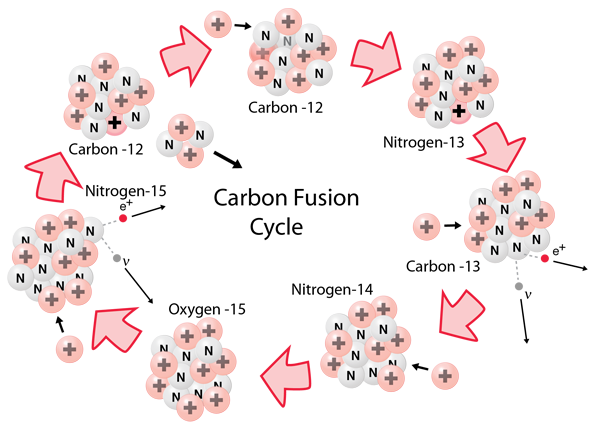
In stars with central temperatures greater than 15 million Kelvin, carbon fusion is thought to take over the dominant role rather than hydrogen fusion. The main theme of the carbon cycle is the adding of protons, but after a carbon-12 nucleus fuses with a proton to form nitrogen-13, one of the protons decays with the emission of a positron and a neutrino to form carbon-13. Two more proton captures produce nitrogen-14 and then oxygen-15. Another neutron decay leaves nitrogen-15. Another proton capture produces oxygen-16 which emits an energetic alpha particle to return to carbon-12 to repeat the cycle. This last reaction is the main source of energy in the cycle for the fueling of the star.
While this process is not a significant part of the sun's fuel cycle, a star like Sirius with somewhat more than twice the mass of the sun derives almost all of its power from the carbon cycle. The carbon cycle yields 26.72 MeV per helium nucleus.
| Hans Bethe and the carbon cycle | The proton-proton cycle |
Nuclear fusion in stars
Reference
Stars, Time-Life
Ch. 2
Blatt
Ch. 15
| HyperPhysics***** Astrophysics | R Nave |